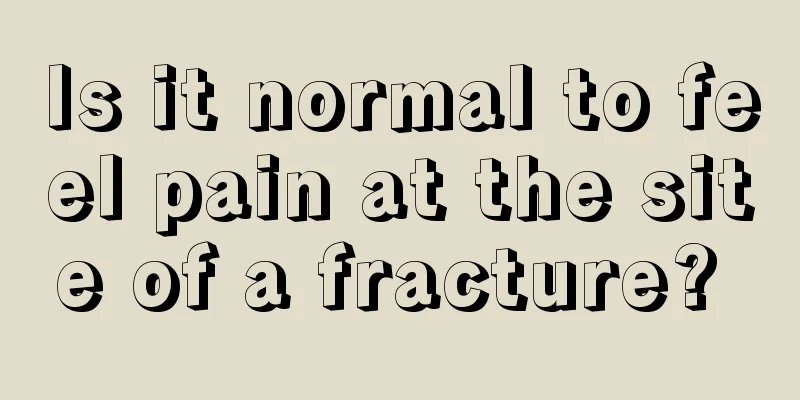Is the 5th sacral vertebra fracture serious?

|
The sacrum is a relatively important bone in the human body, mainly connected to the vertebrae. If the sacrum is accidentally hit by a violent external force, it is very likely to be fractured. A fracture of the S5 vertebra is not considered a serious symptom and generally does not have an impact on other parts of the body. However, in order to recover as soon as possible, patients still need to go to the hospital for examination and treatment in time. 1. Is a S5 vertebral fracture serious? For adults, the sacral vertebrae are fused with each other, which is more accurately described as a sacral fracture. The probability of a sacrum fracture in infants and young children is much smaller. For sacral fractures, if there is no perineum area or abnormal nerve sensation in the corresponding area, that is, after the fracture, there is no compression on the corresponding nerves and it does not affect urination and defecation. This type of fracture is not serious, and the specific situation still needs to be examined based on the corresponding X-ray film. Sacral fractures are best reconstructed by CT three-dimensional reconstruction to further clarify the location and extent of the fracture, and then formulate the next treatment plan. Treatment of sacral fractures 1. Treatment principles (1) For those without dislocation, rest on a wooden bed for 3 to 4 weeks, then put on plaster shorts and get up and move around. When sitting, use an air cushion or sponge to protect the area and relieve pressure. (2) For mild displacement, the tooth is gradually repositioned through digital rectal examination after local anesthesia and repeated once after 2 to 3 days to maintain the position. (3) Severe displacement: After local anesthesia, manual reduction is performed through digital rectal examination. If reduction is impossible or the position cannot be maintained, open reduction and internal fixation can be performed as appropriate. (4) Patients with combined pelvic fractures should be treated mainly for the pelvic fracture, including bed rest (frog position), tibial tuberosity traction therapy, open reduction and internal fixation, etc. (5) For patients with sacral nerve compression, local blockade therapy can be performed first. If it is ineffective, surgical decompression is required. 2. Special types of fractures and their treatment (1) Longitudinal sacral fractures with sacroiliac joint separation. Except for a few cases that can be treated with open reduction and internal fixation, most cases are treated with non-surgical treatment in the following order: ① traction reduction; ② pelvic cuff suspension traction; ③ plaster shorts fixation. (2) Transverse fractures of the upper sacrum: Patients with concomitant sacral nerve root injury often require surgical treatment, during which the sacral lamina is removed in order to achieve nerve decompression. For sacral fractures with obvious displacement, prying reduction can be considered. Non-surgical treatment is suitable for cases with no displacement or mild displacement that can be reduced manually. (3) Transverse fracture of the lower sacrum ① Non-displaced fracture: Only frog position and bed rest for 2 to 3 weeks are required. If necessary, blockade therapy or long-acting analgesics can be used for pain relief. ② If there is a displaced fracture, generally under local anesthesia, the fracture fragment is gently pushed backwards with the index finger to reposition the fracture ends according to the method of digital rectal examination. If manual reduction fails, open reduction and Kirschner wire fixation can be considered. (4) Transverse sacral fractures combined with lumbar dislocation are more difficult to treat and most require open reduction and internal fixation. Pedicle screw technology + wire fixation ligation can be selected as appropriate. (5) Simple lumbar dislocation should be treated with surgical therapy according to the principle of "spondylolisthesis", and most patients use posterior pedicle screw fixation + intersegmental cage internal fixation. (6) Bilateral sacroiliac joint dislocation with sacral fracture: Mild cases only require bed rest for a few days (frog position) and fixation with plaster shorts. However, for cases with obvious displacement and failed manual reduction, open reduction and bilateral sacroiliac joint fusion are required. |
<<: Are the infectious disease department and the infectious disease department the same?
>>: What does a hyperbaric oxygen chamber treat
Recommend
How to make a bubble bath
Bubble bath is a very popular bathing method in d...
The chin is not cleanly shaved
Due to the influence of male hormones, men will g...
Is it good to dye your hair frequently?
Young people nowadays care more about their image...
What are the early symptoms of nasopharyngeal cancer that may appear in life
There are many patients with nasopharyngeal cance...
What is the approximate cost of melanoma
With the rapid development of social economy, peo...
Is borax harmful to the skin? How to prevent it?
Borax is a translucent crystal that looks similar...
Cost of targeted therapy for lymphoma
The cost of targeted therapy for lymphoma is not ...
Will tongue cancer definitely cause pain?
Tongue cancer is a malignant tumor in the oral ca...
If you find a lump in your neck, be alert to nasopharyngeal cancer
The nose and the neck, two seemingly unrelated pa...
What pathological examinations should be done for embryo suspension
For pregnant women, the most feared thing is feta...
What are the types of removable dentures
Every part of the body is very important. Teeth p...
Three clinical manifestations of posterior fossa brain cancer
The inner surface of the skull base is uneven and...
Can mung beans still be eaten after being stored for a year?
Mung beans can be eaten even after a year. As lon...
What are the symptoms of Yin deficiency and Yang hyperactivity
Yin deficiency and Yang hyperactivity are very ha...
When do fetal movements decrease?
The so-called fetal movement refers to the moveme...









